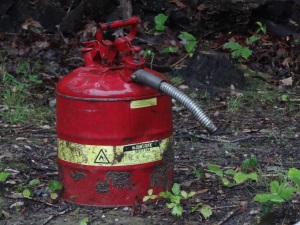Fleets and businesses aren’t the only people who need to store fuel. Many consumers regularly keep smaller volumes of fuel at home, for use in lawn mowers, small engines, generators, and even to keep on hand for emergency use in hurricane season. Read on to get fuel storage recommendations.


We’ve said it many times – today’s gas and diesel fuels are not same as in year’s past. And that changes things if you’re thinking of storing those fuels at home for later use.
For gasoline, most of those fuels have at least 10% ethanol content. It’s labelled right on the pump. The presence of ethanol in gasoline makes it more likely to attract and absorb water over time, in any container that is vented to the outside air. Which means today’s gasolines have a much shorter storage life before they go bad through phase separation (separation of the ethanol from the gasoline) and other processes.
For diesel fuels, today’s ultra-low sulfur diesel fuels may be better for the environment (lower sulfur means less acid rain), but they are more prone to faster deterioration from a host of environmental effects. They resist oxidation, darkening and stratifying much less effectively than in years past. And they have the big problem of microbial growth….any time you get water in fuel, it gives bacteria and fungus from the environment what they need to grow. Diesel fuels in the past had higher sulfur content that microbes hate – thus, past diesel fuels were better at resisting microbial growth. That’s not the case any more. Microbial growth in your stored fuel will destroy its quality and cause problems in your equipment very quickly.
Recommendation - Keep fuel in an approved container and follow safety guidelines
Legally, at a gas station you’re not supposed to even dispense fuel from the pump into anything but an approved container. For gasoline, such containers are 5 gallons or less, made from approved materials (not glass), and have proper labelling engraved on them (which says the container meets the required specs for fuel storage). Fire codes will usually restrict your volume of stored gasoline to 25 gallons or less.
You don’t ever want to store fuel in glass containers because of the danger of breakage.
Fill the container only up to 95% capacity to allow for expansion.
And use common sense to make sure the fuel is stored safely. That means out of reach of children, at least 50 feet away from ignition sources like pilot lights, not in the house, and out of direct sunlight. If you’re storing it on concrete, put a piece of plywood underneath the container.
Recommendation – Use stabilizers and biocides to protect stored fuel quality
If you’re storing fuel for more than a couple of weeks, add a little bit of fuel biocide to kill microbes and keep them away. A biocide is the only thing that will kill microbes in fuel. Something that just claims to “control bacteria and algae in fuel” by removing water is not a biocide, even though they may want consumers to think they are.
Adding stabilizer to gas or diesel isn’t just something we recommendation. Engine manufacturers like Honda and Briggs & Stratton all agree that stabilizers are a great idea to use if you’re storing any kind of fuel. Stabilizers work to neutralize the chemical reactions that normally take place in stored fuel to break down its fuel quality, with a net effect of substantially extending the fuel’s usable storage life.
Given that you won’t be storing huge volumes of fuel, you won’t need to add very much of either one. Which means you can buy bottles of biocide and stabilizer and they’ll last you for a long time.
Check out these other posts related to fuel storage:
- 8 Signs of Diesel Fuel Contamination by Microbes, Fungus and Bacteria
- Fuel Storage and Diesel Generator Problems: Fuel Microbes
- Doing biodiesel storage? You need to know this

Image Credit: DodgertonSkillhause via MorgueFile